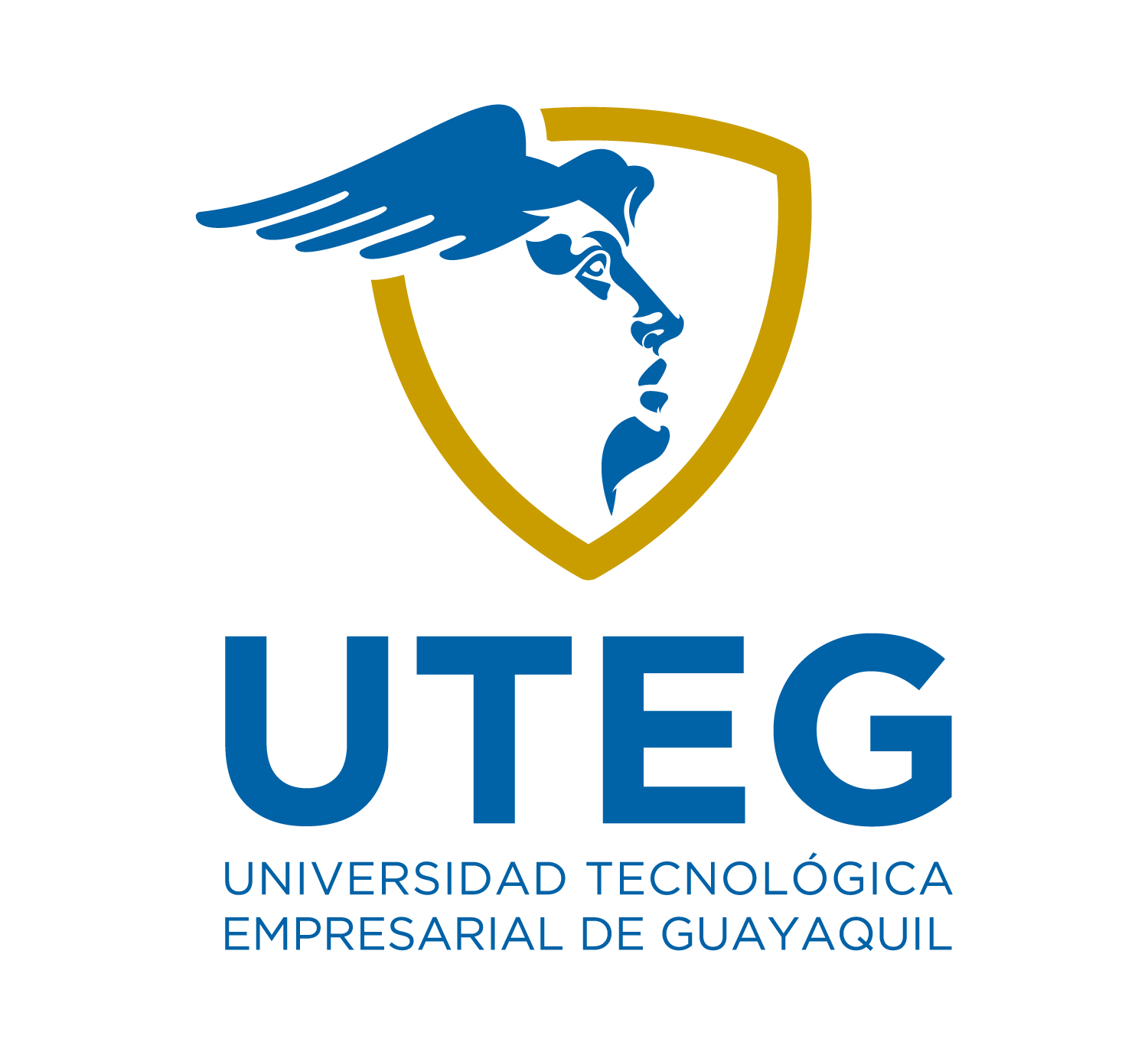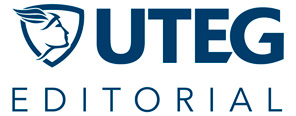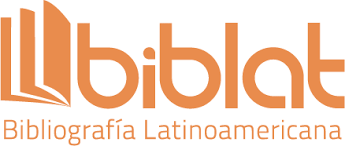Evaluación de materiales oxídicos para la remoción de iones hierro y cobre en aguas naturales
DOI:
https://doi.org/10.47189/rcct.v24i41.682Palabras clave:
adsorción, cobre, hierro, material oxídico, isotermasResumen
La presencia natural de hierro y cobre en el agua es esencial para procesos ambientales, pero su explotación minera excesiva causa concentraciones elevadas, amenazando los ecosistemas debido a su capacidad de bioacumulación. El presente estudio se enfocó en evaluar la eficacia de sustratos adsorbentes elaborados a partir de materiales oxídicos de carga variable (SA, SCR, RV), para la remoción de hierro y cobre de soluciones acuosas. Los lechos fueron evaluados de forma natural y desprotonados mediante la activación con NaOH. Además, se examinó el equilibrio del proceso de adsorción de estos metales. Los resultados revelaron que el material natural SCR exhibe una destacada capacidad para retener tanto hierro (2.65 mg/100g) como cobre (17.89 mg/100g). Tras el tratamiento alcalino, se observó un aumento significativo en la capacidad de adsorción de los materiales, atribuida a la presencia de sesquióxidos en su estructura, siendo los materiales SCR (46.88 mg/100g, para hierro) y SA (38.24 mg/100g, para cobre) los más eficaces. Este aumento evidencia la versatilidad de estos sustratos de carga variable, en la remoción de iones metálicos. Los modelos de equilibrio sugieren que la adsorción es principalmente química y ocurre en una monocapa homogénea en la superficie del material. Esta investigación muestra que los materiales oxídicos naturales y activados son eficientes en la remoción de hierro y cobre, lo que es crucial para el tratamiento de aguas contaminadas por metales pesados
Descargas
Referencias
Abdelwaheb, M., Jebali, K., Dhaouadi, H., & Dridi-dhaouadi, S. (2019). Adsorption of nitrate, phosphate, nickel and lead on soils: Risk of groundwater contamination. Ecotoxicology and Environmental Safety, 179(April), 182–187. https://doi.org/10.1016/j.ecoenv.2019.04.040
Al-Ghouti, M. A., & Da’ana, D. A. (2020). Guidelines for the use and interpretation of adsorption isotherm models: A review. Journal of Hazardous Materials, 393(November 2019), 122383. https://doi.org/10.1016/j.jhazmat.2020.122383
Al-Saydeh, S. A., El-Naas, M. H., & Zaidi, S. J. (2017). Copper removal from industrial wastewater: A comprehensive review. Journal of Industrial and Engineering Chemistry, 56, 35–44. https://doi.org/10.1016/j.jiec.2017.07.026
Ayawei, N., Ebelegi, A. N., & Wankasi, D. (2017). Modelling and interpretation of adsorption isotherms. Journal of Chemistry, 2017, ID 3039817. https://doi.org/10.1155/2017/3039817
Carbonel Ramos, D. (2018). Cadmium, copper and lead adsorption on natural and modified bentonite, kaolin and zeolite: A review of process parameters, isotherms and kinetics. Ingeniería, 23(3), 252–273. https://doi.org/https://doi.org/10.14483/23448393.13418
Chen, L., Zhao, Y., Bai, H., Wen, T., Ai, Z., & Song, S. (2021). Effect of protonation and deprotonation reactions of clay on regulating pyrite flotation in the presence of clay. Colloids and Surfaces A: Physicochemical and Engineering Aspects, 609(January), 125654. https://doi.org/10.1016/j.colsurfa.2020.125654
González-Costa, J. J., Reigosa, M. J., Matías, J. M., & Fernández-Covelo, E. (2017). Analysis of the importance of oxides and clays in Cd, Cr, Cu, Ni, Pb and Zn adsorption and retention with regression trees. PLoS ONE, 12(1), 1–25. https://doi.org/10.1371/journal.pone.0168523
Gu, S., Kang, X., Wang, L., Lichtfouse, E., & Wang, C. (2019). Clay mineral adsorbents for heavy metal removal from wastewater: A review. Environmental Chemistry Letters, 17(2), 629–654. https://doi.org/10.1007/s10311-018-0813-9
Guaya, D., Valderrama, C., Farran, A., Armijos, C., & Cortina, J. L. (2015). Simultaneous phosphate and ammonium removal from aqueous solution by a hydrated aluminum oxide modified natural zeolite. Chemical Engineering Journal, 271, 204–213. https://doi.org/10.1016/j.cej.2015.03.003
Jiang, J., Xu, R., & Li, S. (2010). Effect of Ionic strength and mechanism of Cu(II) adsorption by goethite and γ-Al2O3. Journal of Chemical & Engineering Data, 55(12), 5547–5552. https://doi.org/https://doi.org/10.1021/je100271u
Khan, J., Lin, S., Nizeyimana, J. C., Wu, Y., Wang, Q., & Liu, X. (2021). Removal of copper ions from wastewater via adsorption on modified hematite (α-Fe2O3) iron oxide coated sand. Journal of Cleaner Production, 319(August), 128687. https://doi.org/10.1016/j.jclepro.2021.128687
Khatri, N., Tyagi, S., & Rawtani, D. (2017). Recent strategies for the removal of iron from water: A review. Journal of Water Process Engineering, 19(13), 291–304. https://doi.org/10.1016/j.jwpe.2017.08.015
López-Luna, J., Ramírez-Montes, L. E., Martinez-Vargas, S., Martínez, A. I., Mijangos-Ricardez, O. F., González-Chávez, M. del C. A., Carrillo-González, R., Solís-Domínguez, F. A., Cuevas-Díaz, M. del C., & Vázquez-Hipólito, V. (2019). Linear and nonlinear kinetic and isotherm adsorption models for arsenic removal by manganese ferrite nanoparticles. SN Applied Sciences, 1(8), 1–19. https://doi.org/10.1007/s42452-019-0977-3
Marcano-Martinez, E., & McBride, M. B. (1989). Comparison of the titration and ion adsorption methods for surface charge measurement in oxisols. Soil Science Society Ao America Journal, 53(4), 1040–1045. https://doi.org/10.2136/sssaj1989.03615995005300040009x
Márquez, A., Millán, F., Prato, J. G., & La Cruz, C. (2020). Adsorción de iones Cr(VI) sobre lechos adsorbente calcinados con superficie de carga variable químicamente modificada. Revista Técnica de Ingenieria de La Universidad Del Zulia, 43(2), 72–81. https://doi.org/10.22209/rt.v43n2a03
Millán, F., Prato, J. G., García, M., Díaz, I., & Sánchez-Molina, J. (2013). Adsorption of Cu and Zn by variable charge lithologic materials from soils of Merida state, Venezuela. Revista Técnica de Ingeniería de La Universidad Del Zulia, 36(3), 195–201. https://produccioncientificaluz.org/index.php/tecnica/article/view/6918
Millan, F., Prato, J. G., González, L. C., Márquez, A., & Djabayan, P. (2019). Quimioadsorción de Cu+2 sobre un sustrato calcinado preparado con un material litológico refractario de carga variable. Revista Técnica de Ingeniería de La Universidad Del Zulia, 42(1), 10–18.
Novikova, L., & Belchinskaya, L. (2016). Adsorptions of Industrial Pollutions by Natural and Modified Aluminosilicates. In G. Morari do Nascimento (Ed.), Clays, Clay Mineraland Ceramic Materials Based on Clay Minerals (pp. 89–128). IntechOpen. https://doi.org/https://doi.org/10.5772/61678
Pansu, M., & Gautheyrou, J. (2006). Handbook of soil analysis: Mineralogical, organic and inorganic methods. In Handbook of Soil Analysis: Mineralogical, Organic and Inorganic Methods. https://doi.org/10.1007/978-3-540-31211-6
Prato, J. G., Millán, F., González, L. C., Ríos, A. C., López, E., Ríos, I., Navas, S., Márquez, A., Carrero, J. C., & Díaz, J. I. (2022). Adsorption of phosphate and nitrate ions on oxidic substrates prepared with a variable-charge lithological material. Water (Switzerland), 14(16). https://doi.org/10.3390/w14162454
Prato, J. G., Millán, F., Rangel, M., Márquez, A., González, L. C., Ríos, I., García, C., Rondón, C., & Wang, E. (2023). Adsorption of Pb (II) ions on variable charge oxidic calcined substrates with chemically modified surface. F1000Research, 12(Ii), 747. https://doi.org/10.12688/f1000research.132880.1
Prato, J. G., Millán, F., Ríos, A., & González-Ramírez, L. C. (2022). Uso de materiales litológicos oxídicos para la reducción de la dureza en aguas naturales. Información Tecnológica, 33(2), 145–156. https://doi.org/10.4067/S0718-07642022000200145
Rahman, A., Lamb, D., Kunhikrishnan, A., & Rahman, M. M. (2021). Kinetics, isotherms and adsorption-desorption behavior of hosphorus from aqueous solution using zirconium–iron and iron modified bosolid biochars. Water, 13, 3320. https://doi.org/10.3390/w13233320
Renu, Agarwal, M., & Singh, K. (2017). Heavy metal removal from wastewater using various adsorbents: A review. Journal of Water Reuse and Desalination, 7(4), 387–419. https://doi.org/10.2166/wrd.2016.104
Rice, E. W., Baird, R. D., & Eaton, A. D. (2017). Standard methods. In E. W. Rice, R. D. Baird, & A. D. Eaton (Eds.), Standard methods for the examination of water and wastewater. In Standard Methods for the Examination of Water and Wastewater (23rd ed). American Public Health Association, American Water Works Association, Water Environment Federation. https://www.awwa.org/Store/Product-Details/productId/6526629
Seliem, M. K., & Komarneni, S. (2016). Equilibrium and kinetic studies for adsorption of iron from aqueous solution by synthetic Na-A zeolites: Statistical modeling and optimization. Microporous and Mesoporous Materials, 228, 266–274. https://doi.org/10.1016/j.micromeso.2016.04.010
Tan, K. H. (2005). Soil sampling, preparation and analysis (2nd ed.). CRC Press.
Ugwu, M., & Igbokwe, A. (2019). Sorption of heavy metals on clay minerals and oxides: A review. In S. Edebal (Ed.), Advanced Sorption Process Applications (pp. 1–23). https://doi.org/http://dx.doi.org/10.5772/intechopen.80989
Wang, Y., Jiang, J., Xu, R., & Tiwari, D. (2009). Phosphate adsorption at variable charge soil/water interfaces as influenced by ionic strength. Australian Journal of Soil Research, 47, 529–536. https://doi.org/10.1071/SR08181
Xu, R. K., Qafoku, N. P., Ranst, E. Van, Li, J., & Jiang, J. (2016). Adsorption properties of subtropical and tropical variable charge soils: Implications from climate change and biochar amendment. In Advances in Agronomy (Vol. 135). Elsevier Inc. https://doi.org/10.1016/bs.agron.2015.09.001
Xu, Ren Kou, Wang, Y., Tiwari, D., & Wang, H. (2009). Effect of ionic strength on adsorption of As(III) and As(V) on variable charge soils. Journal of Environmental Sciences, 21(7), 927–932. https://doi.org/10.1016/S1001-0742(08)62363-3
Yang, L., Yang, M., Xu, P., Zhao, X., Bai, H., & Li, H. (2017). Characteristics of nitrate removal from aqueous solution by modified steel slag. Water (Switzerland), 9(10). https://doi.org/10.3390/w9100757
Publicado
Número
Sección
Licencia
Derechos de autor 2024 Revista Científica Ciencia y Tecnología

Esta obra está bajo una licencia internacional Creative Commons Atribución-NoComercial 4.0.













